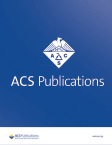摘要 PO3-22-08:基于邮政编码的收入对突变阳性乳腺癌患者整形方法和结果的影响
IF 3.4
Q2 PUBLIC, ENVIRONMENTAL & OCCUPATIONAL HEALTH
引用次数: 0
摘要
背景:在美国,13% 的妇女会罹患浸润性乳腺癌,某些基因突变会增加患癌风险。基因筛查费用昂贵,患者负担沉重,尤其是社会经济背景较低的患者。此外,低收入(LI)患者在获得医疗保健方面面临障碍,乳房重建率也较低。本研究旨在探讨以邮政编码收入中位数为指标的社会经济地位对突变阳性(M+)患者的乳房手术类型、重建技术和围手术期结果的影响。研究方法一项多中心回顾性队列研究纳入了2016年1月至2022年10月期间接受乳房和整形手术的有乳腺癌遗传倾向的患者。研究收集了患者的人口统计学资料、病史、手术细节和术后结果。将患者的邮政编码与美国社区调查进行交叉比对,以确定家庭收入中位数,并以此作为患者特定家庭收入的代表。确定了四个不同的收入四分位数:四分位数 1(Q1)= 37,045 美元-81,586 美元("LI");四分位数 2(Q2)= 81,587 美元-103,703 美元;四分位数 3(Q3)= 103,704 美元-129,768 美元;四分位数 4(Q4)= 129,769 美元-213,724 美元。结果:在分析的 170 名患者中,42 人(24.7%)在第一季度,42 人(24.7%)在第二季度,44 人(25.9%)在第三季度,42 人(24.7%)在第四季度。大多数患者有 BRCA1(73 人,42.9%)、BRCA2(68 人,40.0%)、PALB2(11 人,6.5%)或 CHEK2(8 人,64.7%)突变,并在没有乳腺癌证据的情况下接受了预防性乳房切除术(119 人,70.0%)。平均年龄和体重指数(BMI)分别为 41±16 岁和 25.0±7.5 kg/m2。患者的种族和收入之间有明显的关联(p< 0.0001),如 30.1%的白人患者在第四季度(黑人患者为 8.3%),而 38.9%的黑人患者在第一季度(白人患者为 19.0%)。LI与较高的体重指数(P=0.0083)和肥胖率(P=0.0080)明显相关。乳头保留乳房切除术(NSM)(103 人,60.6%)是最常见的手术方式,其次是皮肤保留乳房切除术(SSM)(42 人,24.7%)、单纯乳房切除术(13 人,7.6%)、肿块切除术(4 人,2.4%)和根治性乳房切除术(4 人,2.4%)。第三季度患者接受 NSM 的频率明显高于第一季度(P=0.0080)。组织扩张器(73 人,42.9%)是最常见的重建方法。34.7%的患者(59人)出现了术后并发症。短期(术后<30天)并发症包括伤口延迟愈合(22人,12.9%)、手术部位感染(16人,9.4%)、开裂(12人,7.1%)、蜂窝组织炎(10人,5.9%)、血清肿(9人,5.3%)和血肿(9人,4.7%)。长期(术后≥30 天)并发症包括乳房切除皮瓣坏死(22 例,占 12.9%)、完全重建失败(8 例,占 4.7%)和红乳综合征(2 例,占 1.2%)。收入水平与并发症发生率无明显关联(P>0.05)。收入水平与癌症复发有明显相关性,与第一季度(6 人,14.3%)相比,第二季度(n=0,0.0%)和第四季度(n=1,2.4%)患者的复发率明显较低(p=0.0140)。在 30.0% 的患者中,DOS 诊断为癌症的患者有 66.7%(n=34)为导管原位癌(DCIS)。其中 11 名患者在第一季度,5 名患者在第二季度,6 名患者在第三季度,12 名患者在第四季度(P=0.259)。结论尽管预防性乳房切除术的比例相似,但低收入 M+ 患者的 NSM 率低于高收入患者,这可能是由于增加随访护理的成本所致。此外,尽管发病时癌症亚型相似,但低收入患者的癌症复发率更高,这可能反映了诊断后护理和发病率的差异。这些发现凸显了解决经济障碍的必要性,并确保所有收入阶层的 M+ 患者都能公平地获得全面护理。引用格式:Jaytin Gupta, Shrayus Sortur, Christian Lava, Margaret Lee, Lauren Berger, Varsha Harish, Daisy Spoer, Lindy Rosal, Ian Greenwalt, Lucy De La Cruz, David Song, Kenneth Fan.基于邮政编码的收入对突变阳性乳腺癌患者整形方法和结果的影响[摘要]。In:2023 年圣安东尼奥乳腺癌研讨会论文集;2023 年 12 月 5-9 日;德克萨斯州圣安东尼奥。费城(宾夕法尼亚州):AACR; Cancer Res 2024;84(9 Suppl):Abstract nr PO3-22-08.本文章由计算机程序翻译,如有差异,请以英文原文为准。
Abstract PO3-22-08: Impact of Zip Code-Based Income on Reconstructive Method and Outcomes in Mutation-Positive Breast Cancer Patients
Background: In the United States, 13% of women develop invasive breast cancer, with certain genetic mutations increasing the risk. Genetic screening is costly and burdensome for patients, particularly those from lower socioeconomic backgrounds. Moreover, lower income (LI) patients face barriers in accessing healthcare and have lower rates of breast reconstruction. This study aims to examine the impact of socioeconomic status, as indicated by ZIP code median income, on the type of breast surgery, reconstructive technique, and perioperative outcomes among mutation-positive (M+) patients.
Methods: A multicenter retrospective cohort study included patients with a genetic predisposition for breast cancer and undergoing breast and reconstructive surgery between January 2016 and October 2022. Patient demographics, history, operative details, and postoperative outcomes were collected. Patient ZIP codes were cross-referenced with the American Community Survey to determine the median household income, which served as a proxy for the patient-specific household income. Four distinct income quartiles were established: quartile 1 (Q1) = $37,045-$81,586 (“LI”); quartile 2 (Q2) = $81,587-$103,703; quartile 3 (Q3) = $103,704-$129,768; and quartile 4 (Q4) = $129,769-$213,724.
Results: Among the 170 patients analyzed, 42 (24.7%) were in Q1, 42 (24.7%) in Q2, 44 (25.9%) in Q3, and 42 (24.7%) in Q4. Most patients had BRCA1 (n=73, 42.9%), BRCA2 (n=68, 40.0%), PALB2 (n=11,6.5%), or CHEK2 (n=8, 64.7%) mutations, and underwent prophylactic mastectomy without evidence of breast cancer (n=119, 70.0%). Mean age and body mass index (BMI) were 41±16 years and 25.0±7.5 kg/m2, respectively. There was a significant association between patient race and income (p< 0.0001), such that 30.1% of White patients were in Q4 (vs. 8.3% of Black patients), compared to 38.9% of Black patients in Q1 (vs.19.0% of White patients). LI was significantly associated with higher BMI (p=0.0083) and obesity rates (p=0.0080). Nipple-sparing mastectomy (NSM) (n=103, 60.6%) was the most frequent surgical approach, followed by skin-sparing mastectomy (SSM) (n=42, 24.7%), simple mastectomy (n=13, 7.6%), lumpectomy (n=4, 2.4%), and radical mastectomy (n=4, 2.4%). Patients in Q3 underwent NSM significantly more often than those in Q1 (p=0.0080). Tissue expander (n=73, 42.9%) was the most common reconstruction method. 34.7% of patients (n=59) experienced postoperative complications. Short-term (< 30 days postoperatively) complications included delayed wound healing (n=22, 12.9%), surgical site infection (n=16, 9.4%), dehiscence (n=12, 7.1%), cellulitis (n=10, 5.9%), seroma (n=9, 5.3%) and hematoma (n=9, 4.7%). Long term (≥30 days postoperatively) complications included mastectomy flap necrosis (n=22, 12.9%), total reconstructive failure (n=8, 4.7%), and red breast syndrome (n=2, 1.2%). There was no significant association between income level and incidence of complications (p >0.05). Income level significantly correlated with cancer recurrence, as patients in Q2 (n=0, 0.0%) and Q4 (n=1, 2.4%) had significantly lower recurrence rates compared to Q1 (n=6, 14.3%) (p=0.0140). Of the 30.0% of patients with diagnosis of cancer at DOS, 66.7% (n=34) of patients had ductal carcinoma in situ (DCIS). Eleven of these patients were in Q1, five in Q2, six in Q3, and twelve in Q4 (p=0.259).
Conclusion: LI M+ patients had lower NSM rates than higher income patients, despite similar rates of prophylactic mastectomies, possibly due to perceived costs of increased follow-up care. Moreover, LI patients experienced higher cancer recurrence, despite similar incidences of equivalent cancer subtypes at presentation, likely reflecting differences in post-diagnostic care and morbidity. These findings highlight the need to address financial barriers and ensure equitable access to comprehensive care for M+ patients of all income strata.
Citation Format: Jaytin Gupta, Shrayus Sortur, Christian Lava, Margaret Lee, Lauren Berger, Varsha Harish, Daisy Spoer, Lindy Rosal, Ian Greenwalt, Lucy De La Cruz, David Song, Kenneth Fan. Impact of Zip Code-Based Income on Reconstructive Method and Outcomes in Mutation-Positive Breast Cancer Patients [abstract]. In: Proceedings of the 2023 San Antonio Breast Cancer Symposium; 2023 Dec 5-9; San Antonio, TX. Philadelphia (PA): AACR; Cancer Res 2024;84(9 Suppl):Abstract nr PO3-22-08.
求助全文
通过发布文献求助,成功后即可免费获取论文全文。
去求助
来源期刊

ACS Chemical Health & Safety
PUBLIC, ENVIRONMENTAL & OCCUPATIONAL HEALTH-
CiteScore
3.10
自引率
20.00%
发文量
63
期刊介绍:
The Journal of Chemical Health and Safety focuses on news, information, and ideas relating to issues and advances in chemical health and safety. The Journal of Chemical Health and Safety covers up-to-the minute, in-depth views of safety issues ranging from OSHA and EPA regulations to the safe handling of hazardous waste, from the latest innovations in effective chemical hygiene practices to the courts'' most recent rulings on safety-related lawsuits. The Journal of Chemical Health and Safety presents real-world information that health, safety and environmental professionals and others responsible for the safety of their workplaces can put to use right away, identifying potential and developing safety concerns before they do real harm.
 求助内容:
求助内容: 应助结果提醒方式:
应助结果提醒方式:


